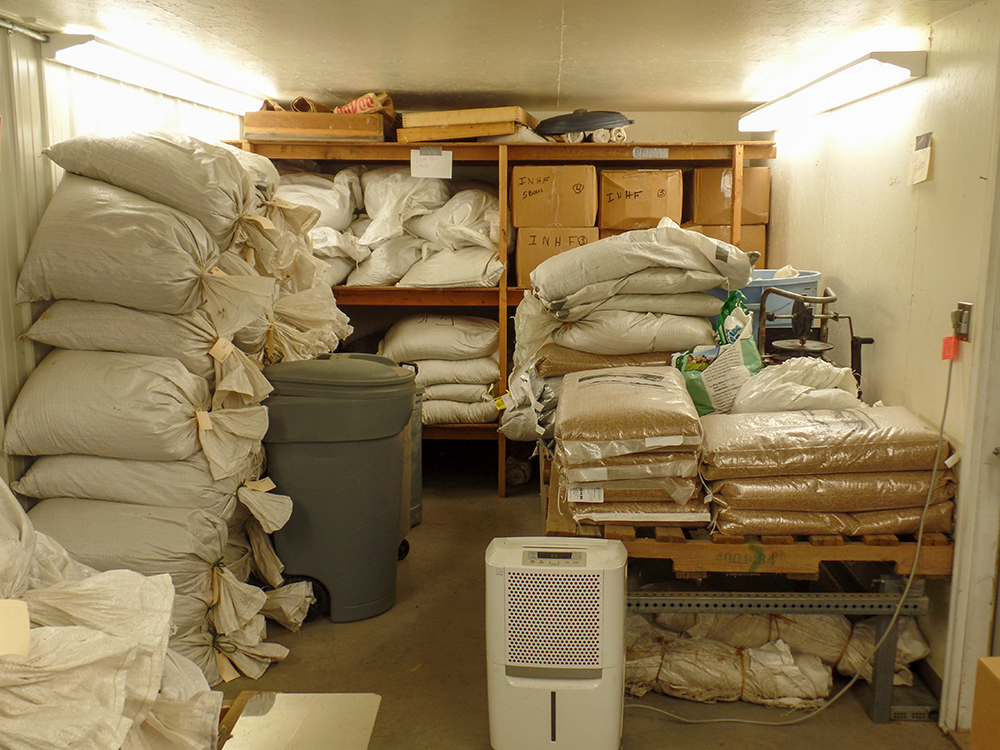Seed Storage and Viability
Table of Contents
Keep Seed Cool and Dry
The viability of native seed deteriorates rapidly at high temperatures and in high humidity.
A general rule of thumb for seed storage: temperature (Fahrenheit) plus percentage relative humidity should not exceed 100. Additional seed storage considerations include:
- Most seed will last at least a year at 50°F and 50% relative humidity.
- For each 10°F increase in temperature, seed longevity is halved.
- For each 1% increase in moisture content of the seed (not relative humidity), longevity is halved.
Example: Seed stored at 70°F and 6% moisture content has only one-quarter of the lifespan of seed stored at 50°F and 6% moisture. Likewise, seed stored at 50°F and 8% moisture content has only one-quarter of the lifespan of seed stored at 50°F and 6% moisture.

Ideal seed storage specifications vary with individual species, but most can be stored in a temperature- and humidity-controlled environment for at least a year without significant loss of viability. Some IRVM programs have a dedicated seed storage facility. These insulated rooms and small buildings are rodent-proof, air-conditioned, and sometimes have industrial dehumidifiers. In the absence of a dedicated seed storage facility, seed should be stored in the coolest place possible. Air circulation can improve conditions if it is impossible to control temperature and humidity. Most seeds can tolerate short periods of storage in temperatures over 100°F, but long-term exposure to such heat can destroy embryos.
No reliable scientific guidelines support increasing seeding rates to account for lower seed viability when stored in suboptimal temperature and humidity conditions. Instead, the safest bet is to find funding for a proper seed storage facility to ensure seed viability.
Commercially produced seed is properly dried before being bagged. For counties and cities growing their own seed and bagging it, seed storage bags should be made of breathable materials such as cloth or woven nylon. Well-dried seed (8–14% moisture content, depending on the species) can be bagged and stored in garbage cans, larger plastic bags, or other sealed containers without suffering damage from fungus or freezing. Seed should be monitored for moisture buildup. Additional information on seed quality, processing, and storage can be found in the Tallgrass Prairie Center’s Native Seed Production Manual.
Roadside Real Talk
Insights from Roadside Managers and Other Professionals
We’ve noticed Liatris grows very poorly unless it’s dormant seeded shortly after harvest. Perhaps it loses viability or vigor when stored over winter, or maybe it needs to be stored at a higher humidity than most seed.
—Jim Uthe and James Devig, Dallas County, 2024
With a little increase in rate per acre, I think year-old seed can be used with no problem. We use older seed (2–3 years) at whatever rate it takes to use it up over the course of the season. I add a reduced rate of new seed to cover any loss of germination.
—Linn Reece, Hardin County, 2010


